How to grow and care for garlic outdoors for a good harvest
Many Russian summer residents have experience planting garlic, but not all of them can boast of the results. Despite many efforts, it is often impossible to grow large, tasty heads with numerous cloves. To eliminate disappointment and save energy, it is enough to find out what features of agricultural technology exist and how to properly cultivate a garlic crop.
When to plant garlic
The time of planting seeds depends on the type of plant and the climatic characteristics of the growing region. There are two varieties of garlic - spring and winter. It is the belonging to the variety that determines the planting time and the taste characteristics of the crop.
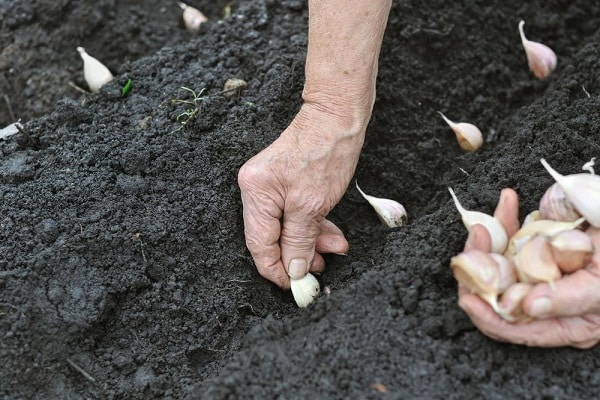
The winter species is sharp and non-shooting. These varieties are planted in the fall. Compared to spring species, they yield earlier crops, but are not subject to long-term storage. Spring garlic is only arrowed. These varieties are planted in spring. The main advantage of spring species is a long shelf life and versatility of use.
Some people practice growing varieties of garlic at home to obtain a valuable source of vitamins and minerals. To obtain the proper result, it is important to choose a capacity of at least 20 cm, use fertile soil and follow the basic rules of agricultural technology for growing a plant.
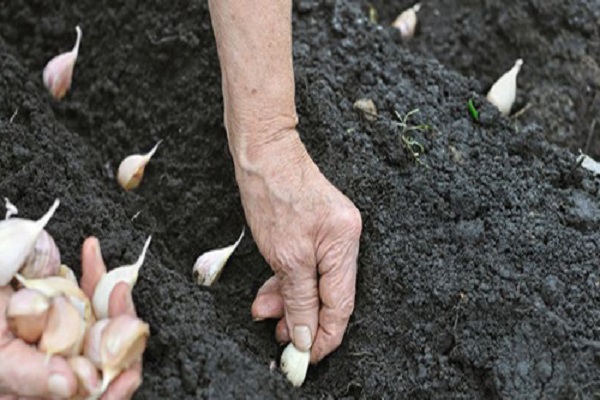
How to grow spring garlic
The technology of growing spring garlic involves planting in medium-sized Russian regions from mid-April. An important factor is the selection of high-quality varietal material. Choosing the right place for planting and adherence to the scheme has a big impact.
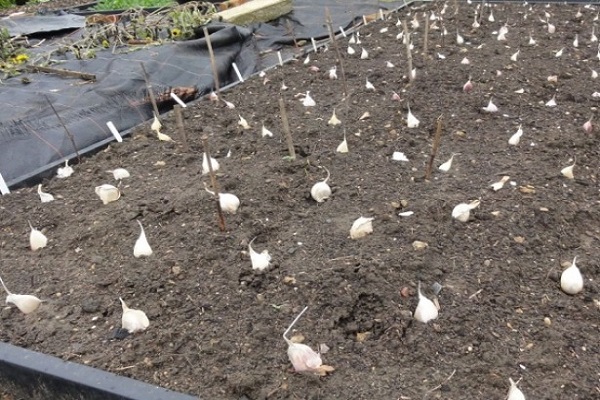
Choosing a place for spring garlic
For growing garlic in the country, they choose a fertile plot of land. It is recommended to choose a sunny area, without the threat of stagnant water and without nearby groundwater. Increased humidity will lead to stunted growth and fungal infections. The formation of a high bed will help to save you the hassle.
Adding sand or peat to the soil will help to increase the looseness and air permeability of the soil for better growth of garlic. You can plant a plant not only in traditional beds, but also use it as a decorating element on the site, landscape design, decor is one of the unusual uses of the plant.
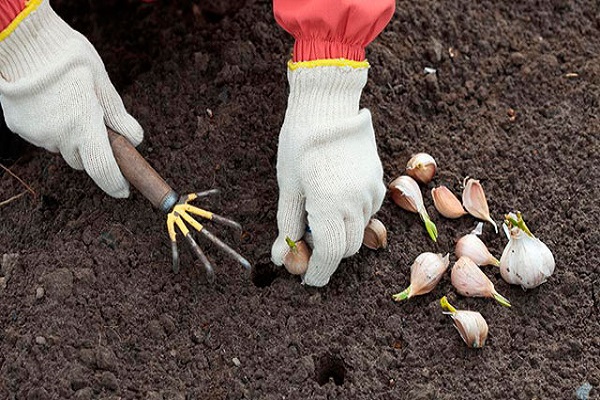
Spring garlic planting scheme
You can get high yields only by providing the plant with fertile soil and proper cultivation techniques.Garlic is planted at a distance between rows from 20 to 25 cm, between each clove is left from 6 to 8 cm.The maximum planting depth of planting material should not exceed 3 cm, otherwise there will be problems with the germination of the plant and the maturation of the heads.
Some gardeners, in addition to the standard planting scheme, use the following technologies:

- in two tiers - the first cloves are deepened by 10 cm, the second row is planted as usual to a depth of 6 cm, the distance between them is from 10 to 15 cm, between rows from 20 to 25 cm, as a result, a double harvest is obtained;
- sowing - the cloves are laid out in a chaotic manner or are simply scattered around the garden.
The first method is more often used when the garden area is limited, the second, if you want to save time.
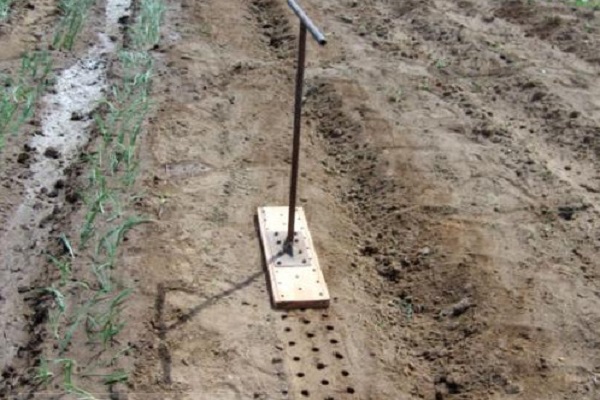
How to grow winter garlic
The soil for garlic should be of good looseness and fertility. During the season, the soil is enriched 3 times. In order for the variety to grow and bring a good harvest, the place should not be flooded, since waterlogging negatively affects the growth of the plant.
Before planting, the soil is thoroughly loosened and shed to a depth of at least 30 cm.
The cloves are planted 35 days before the cold snap. During the time before frost, the seeds should form a root system, but the green mass should not appear above ground level. Garlic planted ahead of time will germinate, and late planting threatens the plant with freezing.
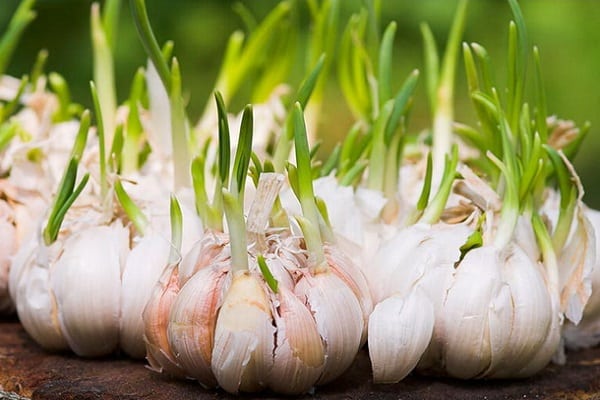
The cloves are planted observing the distance between the beds of 20 or 25 cm.The depth of seeding of seeds should be from 4 to 5 cm, between them they leave from 6 to 8 cm.After planting, after 2 weeks, 2 cm of peat is formed on the beds, which will allow the plant to winter better ...
Preparation of beds for winter garlic
Before planting, the soil is carefully loosened and shed to a depth of at least 30 cm. It is important to consider what kind of soil garlic loves. The soil should not be acidic; if there is a similar problem, chalk or ash is introduced into the garden. It is important to follow the rules of cultivation, that is, do not plant the plant for several years in the same place and take into account garden crops that are favorable for the neighborhood. It is not recommended to grow the plant in one place for more than 3 years. The best predecessors are pumpkin, cabbage, legumes.
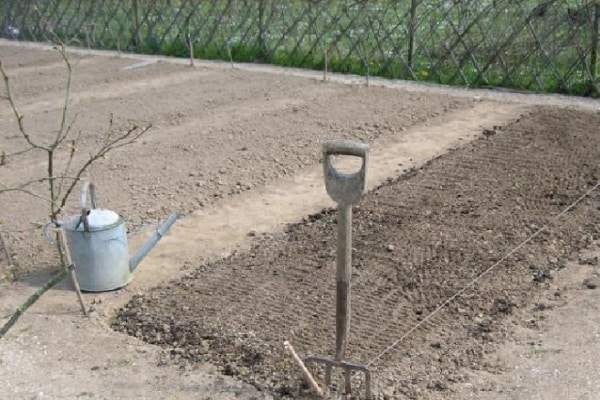
The preparation of the garden must begin in August. 1 m2 soil must be added humus or compost, 1 tbsp. l. superphosphate, 1 tbsp. l. nitrophoska, 1 glass of dolomite flour. It is recommended to add peat to clay soils. The bed is dug to a depth of 20 cm and treated with a solution prepared from copper sulfate with the calculation of 40 g per 10 liters. The tool is prepared based on the fact that 10 m2 area requires 1 liter.
Winter garlic care
The first shoots appear in early spring, they need to be loosened. Watering is carried out as needed and is stopped 20 days before the planned harvest. The rules of cultivation and care set the watering rate in the form of 10-12 liters every 10 days per 1 m2... With sufficient natural precipitation, watering is not required for the plant. Care consists in timely weeding, fertilization and, if necessary, loosening. When growing garlic, summer residents resort to soil mulching, which can significantly save time on watering the plant.
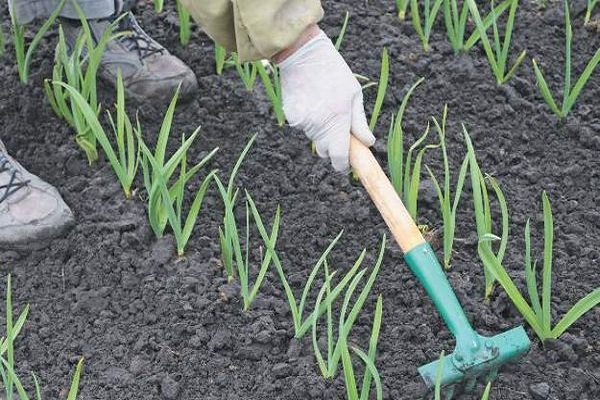
Diseases of culture
Untimely planting of cloves and non-compliance with cultivation techniques are often the causes of plant disease and poor growth. Rust is most common when stains appear on the garlic. The danger of a fungal disease lies in the rapid rate of spread. The reason for its appearance is waterlogging of the soil and high temperatures.
Common illnesses include:

- bacteriosis - depressions and sores of a yellowish tint appear on the teeth;
- green mold - the teeth become soft during storage and become covered with bloom;
- fusarium - the leaves turn yellow, the process starts from the top with a gradual withering away of the root system;
- yellow mold - the aerial part of the plant turns yellow, the leaf plates acquire a wrinkled or corrugated appearance;
- mosaic - small blotches or wide stripes of light color appear on the leaves, the leaves can begin to creep along the ground and the growth of the plant is greatly slowed down.
Fungal diseases often occur due to waterlogging and non-compliance with the planting scheme. Shading is not suitable for the plant; only garlic likes the shade for growing green mass as a seasoning.
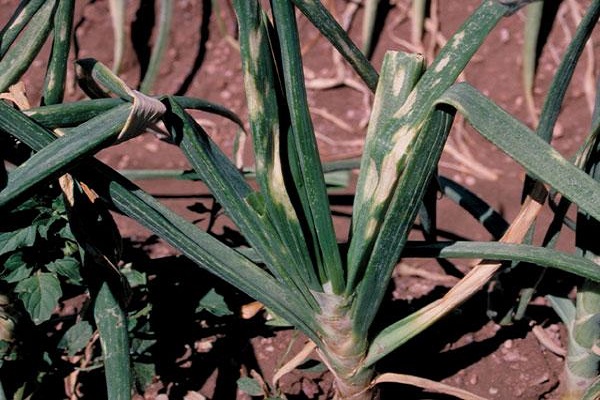
Preparation of planting material
Only high quality heads are selected before planting. If there is a defect even in one clove, it is rejected. The cloves are neatly separated and planted, pre-sorted by size. Planting seeds of the same size will ensure the uniformity of germination and maturation.
Winter and spring garlic are prepared just before planting, carefully separating the cloves.
For planting, if possible, it is recommended to choose the largest cloves, which will allow you to get a large harvest. Do not take heads with 2-3 cloves or fused together as planting material, as this indicates the degeneration of garlic. When using such seeds, it is impossible to obtain the desired yield, and the vegetables grown will be of poor quality.
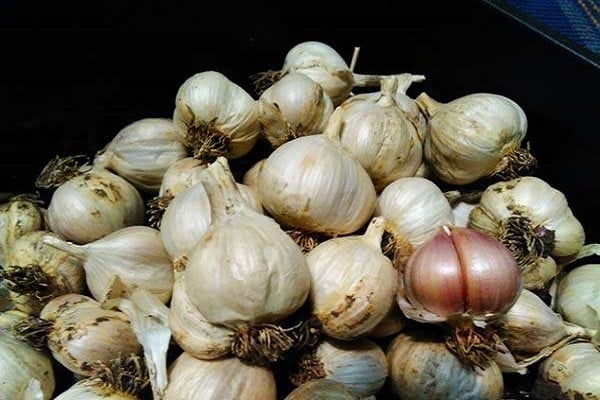
A month before the expected planting, it is recommended to place the garlic in the refrigerator, the temperature should be at least -3 C and no more than +2 C. One day it is taken out and the disinfection procedure is carried out. To do this, you can use various methods. The most popular is soaking in one of the following solutions:
- ash, prepared from 2 liters of water and 300 g of wood material;
- 1% potassium permanganate;
- Fitosporin;
- 1% copper sulfate.
The cloves are immersed in the solution for 30 minutes. After that, it is recommended to place them in growth stimulants, most often "Epin" or potassium humate... Under the garlic, organic and mineral fertilizers are preliminarily introduced into the soil. During the season, feeding is repeated at least 3 times.
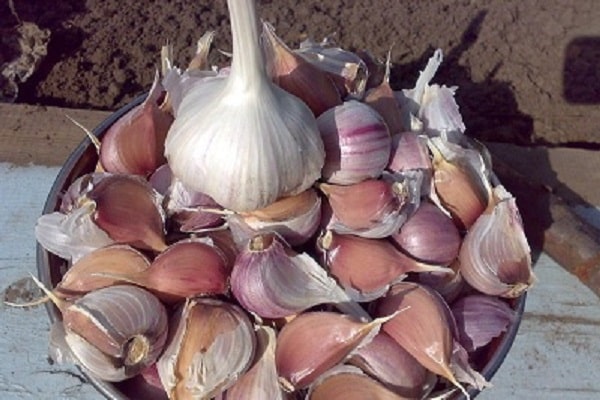
Growing garlic seeds
Growing garlic under home cultivation requires a significant amount of seeds, so garlic is often grown from seeds instead of cloves. In June, arrows with inflorescences begin to form in winter varieties, which are called "bulbochki", and it is from them that seed material is collected. In cold regions, a greenhouse can be used for planting.
For collection, it is necessary to choose healthy plants, at the time of bursting of the inflorescence, the culture is removed from the garden and dried. For this, the plant can be completely pulled out or cut off. Before direct sowing, the bulbs are cleaned, completely removing the inflorescence.
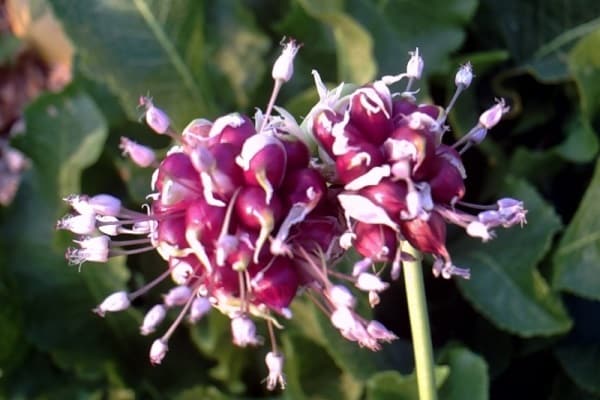
Growing garlic from bulbs
Growing garlic from airy bulbs allows you to significantly save planting material in the form of full-fledged heads. This method is not typical for spring varieties, but is used for winter species. In the period from September to the first week of October, the largest bulbs are sown. By July, each of them will grow into a full-fledged one-tooth, which is later used as planting material before winter to obtain full-fledged heads in the future.
For planting, a garden bed is preliminarily prepared, applied by 1 m2 3 kg of humus and 1 tbsp. l. superphosphate. A width of 90 cm is considered optimal, with a larger size it will be difficult to maintain in the future. For sowing, grooves from 2 to 3 cm are formed, the seeds are planted at a distance of 10 cm from each other. The grooves are sprinkled with loose earth on top.
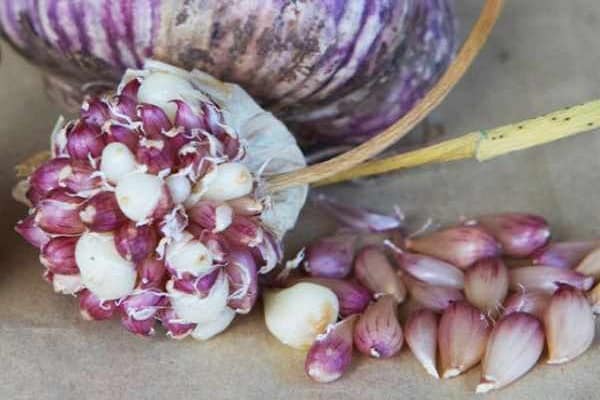
In cold regions, the beds from above are mulched or sprinkled with sawdust, which are removed when the first heat comes and the soil thaws.Plant care is standard and consists in timely watering, loosening and removing weeds. Some grow garlic in a greenhouse using a common planting pattern.
Useful Tips
The first feeding is done in July, at which point the plant should form 4 true leaves. To do this, use a solution of 2 tbsp. l. nitrophoska diluted in 10 liters of water. If desired, you can use special organic fertilizers - "Agricola", "Fertility". 1 m2 accounts for 2 to 3 liters of solution.
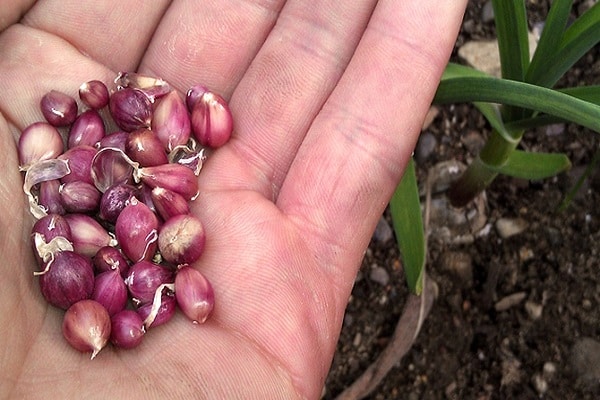
The second feeding is carried out after the first in 14 days. To do this, use the same solutions, but increase the consumption. 1 m2 use 3-4 liters of solution. The third procedure is done in June. To do this, take 2 tbsp. l. crushed superphosphate for 10 liters of water, using a solution in a volume of 5 liters for each 1 m2.
Caring for garlic in August is reduced to standard actions for watering, weeding and loosening the plantings. To obtain large heads of winter varieties in the underground part, it is necessary to break off the arrows before August.

Basic recommendations for growing garlic:
- choose a sunny, dry place for planting, with a strong acidity of the soil, lower the level with chalk or ash;
- use only high-quality material for growing, after disinfecting it;
- observe the terms and scheme of planting the plant;
- loosen, feed and do not overmoisten the soil in a timely manner;
- monitor the health of the plant, at the first signs of the disease, immediately start the fight;
- follow the rules of cultivation and do not plant garlic for more than 3 years in one place, choose the right predecessors.
Garlic is harvested from late August to mid-September. A signal about the possibility of harvesting is the massive lodging of leaves and their rapid yellowing. After digging, the heads must be thoroughly dried for a week and pruned, leaving the stem at a distance of 6 to 8 cm.
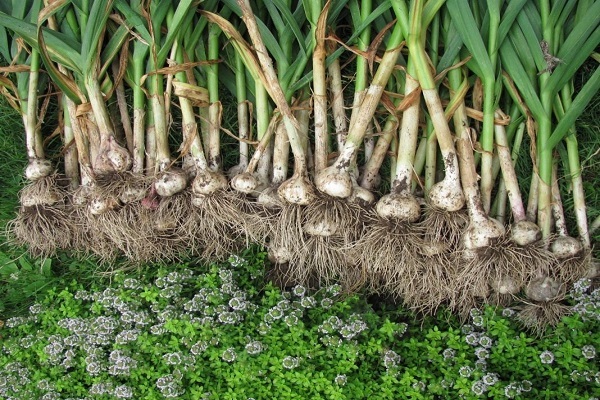
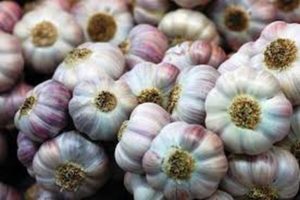

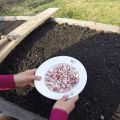


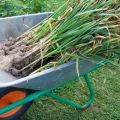
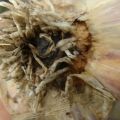
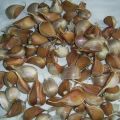
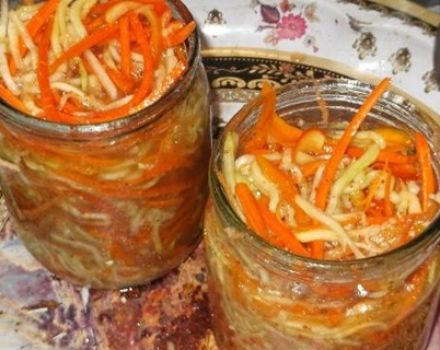
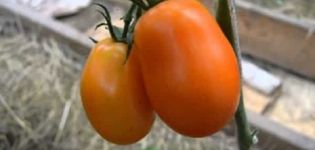
Harvesting times vary by region. In Voronezh, winter garlic is harvested in July. But it's hard to guess with its fit. The above zero temperature, contrary to forecasts, can be in November and December.